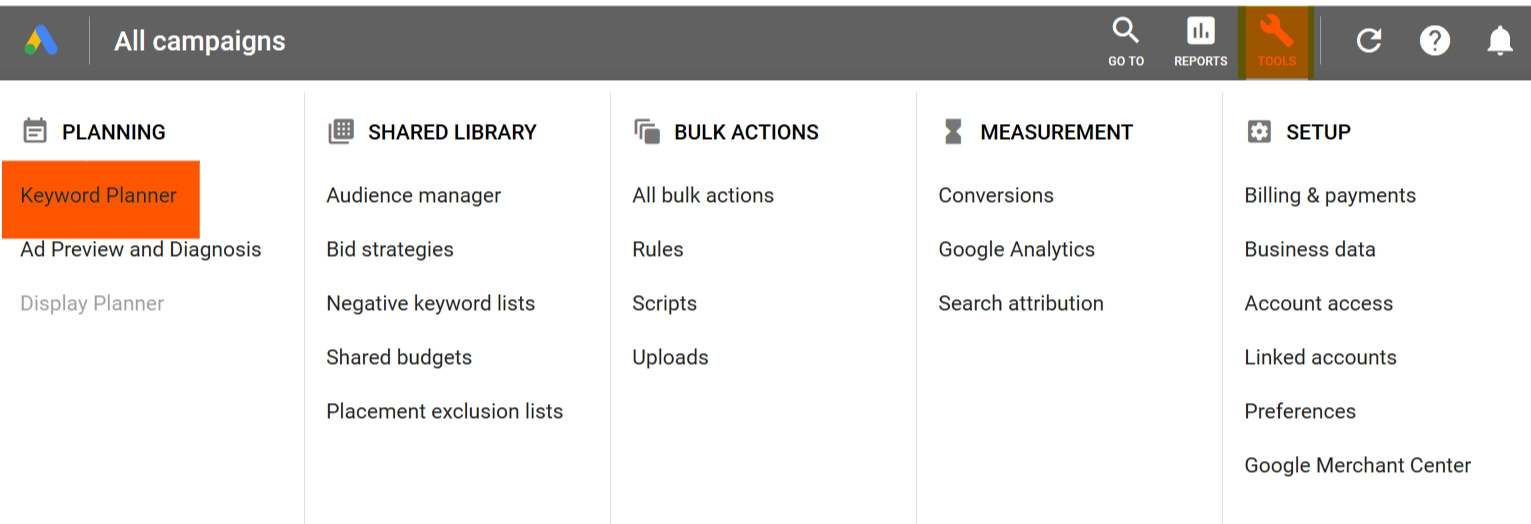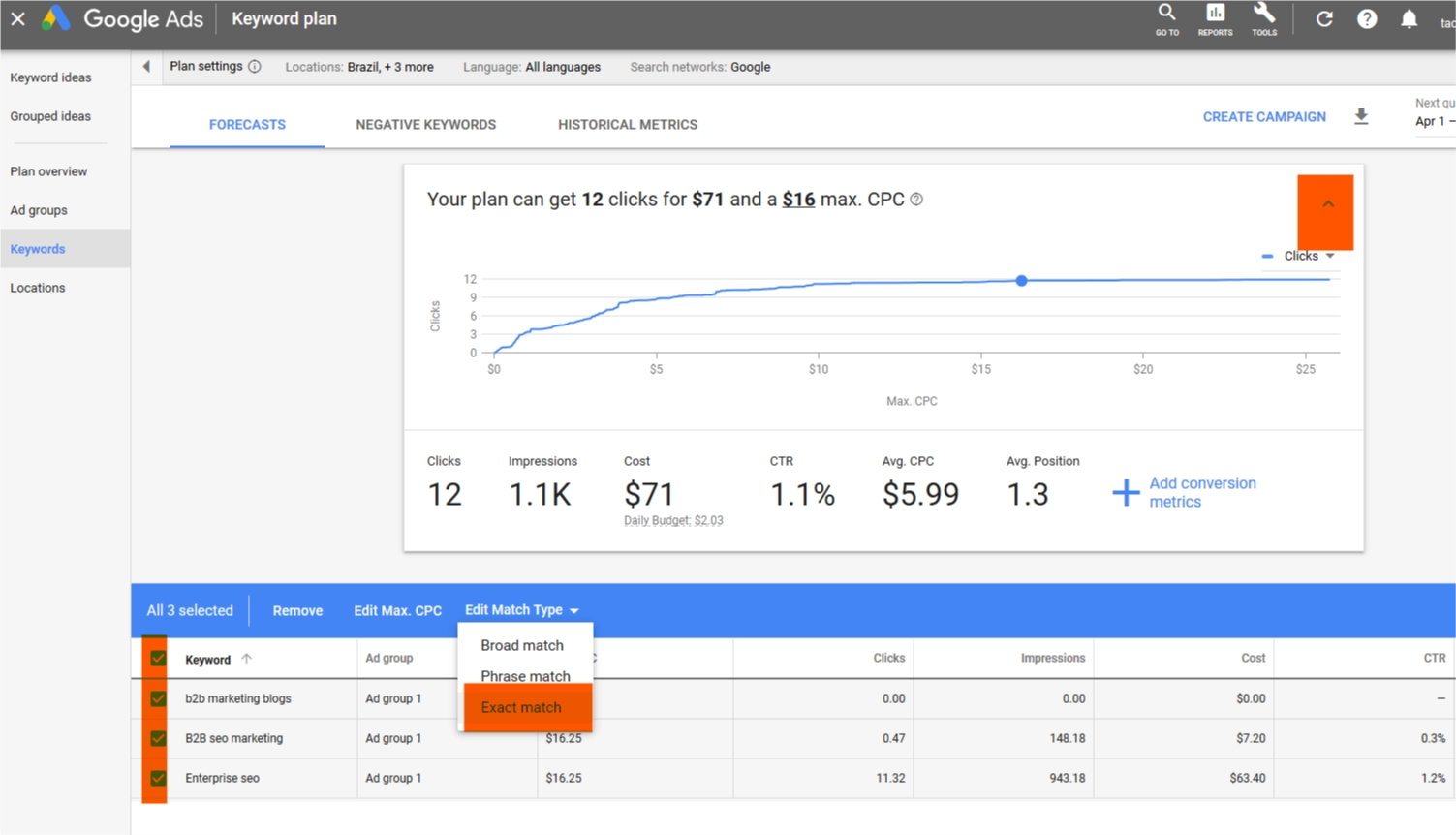
Introduction
The internet is, by far, the leading channel for reaching audiences today with a global penetration rate of 57%. That’s 4.38 billion people. In essence, you can reach slightly more than half the worlds population through the internet. However, not each and every one of these people is likely to be your customer. So, you have to target the people most likely to purchase from you and then understand how to make your content available to them.
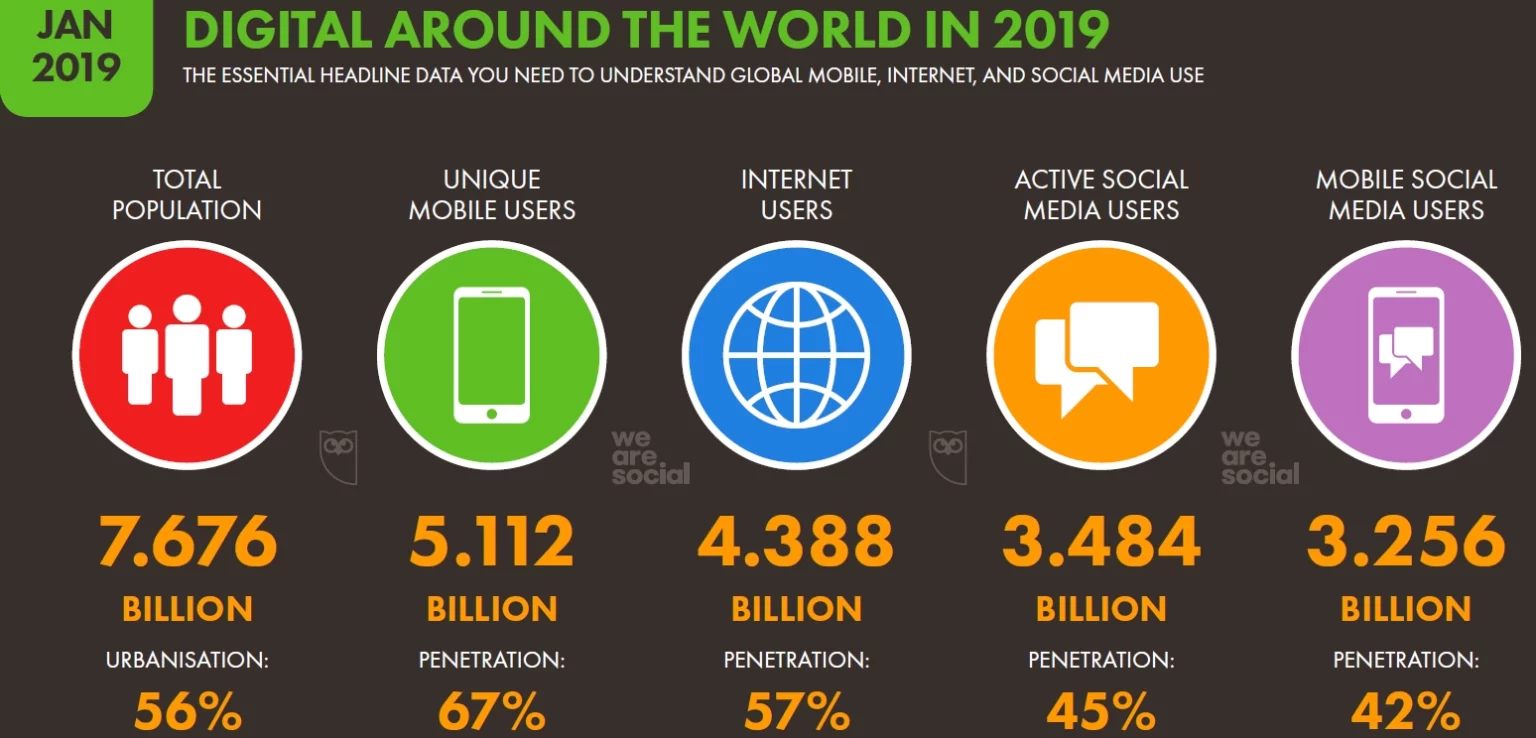
Figure 1: Global Digital Reach
A keyword planner allows you to do keyword research so that you can understand what people are looking for. Google Keyword Planner (KWP), is a great tool that you can use for keyword research. It is proven that Google ads perform better when optimized for keywords. Its distinct advantages are that it is powered by the world’s greatest search engine Google and probably the best part for most people, it’s mostly free to use.
That said, here are some compelling reasons why you should make KWP your friend. Here are just ten of them.
1) Find the Search Volume of Keywords
Typically, when you use KWP, you will get a monthly search volume range (e.g. 10K-100K) for a keyword at no cost. To get the exact monthly search volume, you will need to use an AdWords Planner campaign which will cost you some money. However, some B2B marketing blogs may be unaware that there are some workarounds that you can use to get the exact search volume for free. You can do this by looking at the estimated impressions for the maximum CPC. To do this:
- Go to the Google AdWords welcome screen and look for ‘Skip the guided setup’.On the next page, select ‘Keyword Planner.’
- Then, select ‘Get search volume and forecasts.’
- Next, type in some keywords and on the next page, use the drop-down next to ‘Your plan can get ## clicks for $## and a $## max. CPC’ to see the graph as shown below.
- Then select all the keywords, find ‘Edit Match Type’ and select ‘Exact Match’ as shown below and pay attention to the ‘Impressions’ column to find the number of impressions your keywords would get within 30 days.
2) Poach Keyword Ideas from Competitors
KWP can be used to generate keyword suggestions from any URL. This feature can be repurposed to search for terms that are related to your competitor’s websites and to, therefore, understand the keywords that Google associates with other brands.
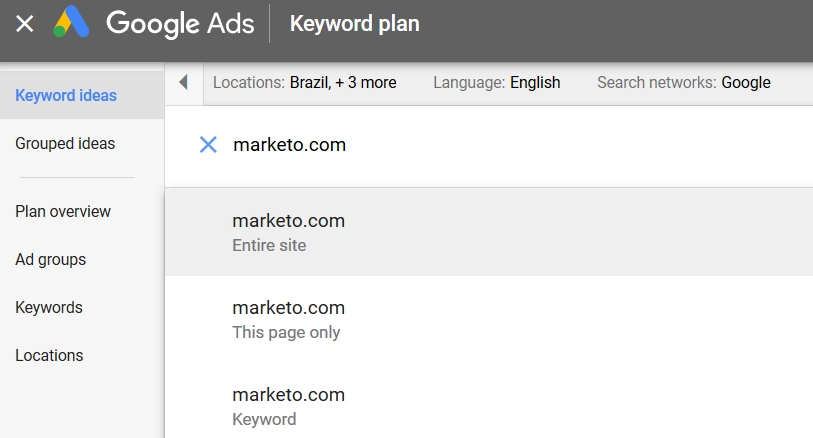
With this data you can:
- Spy on your competitors keywords and use the ones that you find appropriate for your website or web pages
- You can get ideas to improve your site visibility
3) Find Questions People Are Searching For
With KWP you can use Ad groups to find and filter different types of questions that your audience is asking about so that you can come up with content ideas. Although several other tools have this capability, doing it w ithin KWP is undoubtedly more convenient.
Use the 5WH (who, what, why, where, when, how) to filter and find the questions that will help you to generate content that can be used for marketing purposes.
4) Find Valuable Keywords with Commercial Intent
With KWP you can find keywords that are profitable for your business based on suggested bids. Manually sifting through large amounts of valuable keywords can be laborious, but with KWPs filtering feature, you can find the words that you need within seconds. You can filter the results of your keywords using the ‘Top of page bid (high range)’ column, to find the higher range of what competitors (advertisers) have historically paid for. These results will be based on your Search Network settings and location settings.
How is the ‘Top of page bid (high range)’ useful:
- It allows you to gauge keywords that are valuable since advertisers will likely pay more for keywords that are converting to sales
- You can easily find keywords that convert Google search user-intent to commercial intent
- You can compare your ads with those of your competitors and differentiate them by highlighting your USP (unique selling proposition)
5) Recognize the Devices Audiences Use
Audiences that tend to search for certain keywords have an affinity for searching using specific devices including tablets, mobile devices and desktops. Websites need to be optimized for each device based on screen-size to make the user experience as comfortable and as streamlined as possible.
For example, if your audience tends to use a smartphone to search for keywords that you may be targeting, then you should definitely have a mobile-optimized website. To do this, add a keyword and then go to the Plan overview and look at the devices section. You can further filter the graphs based on Avg. CPC, Clicks, Cost, CTR and Impressions.
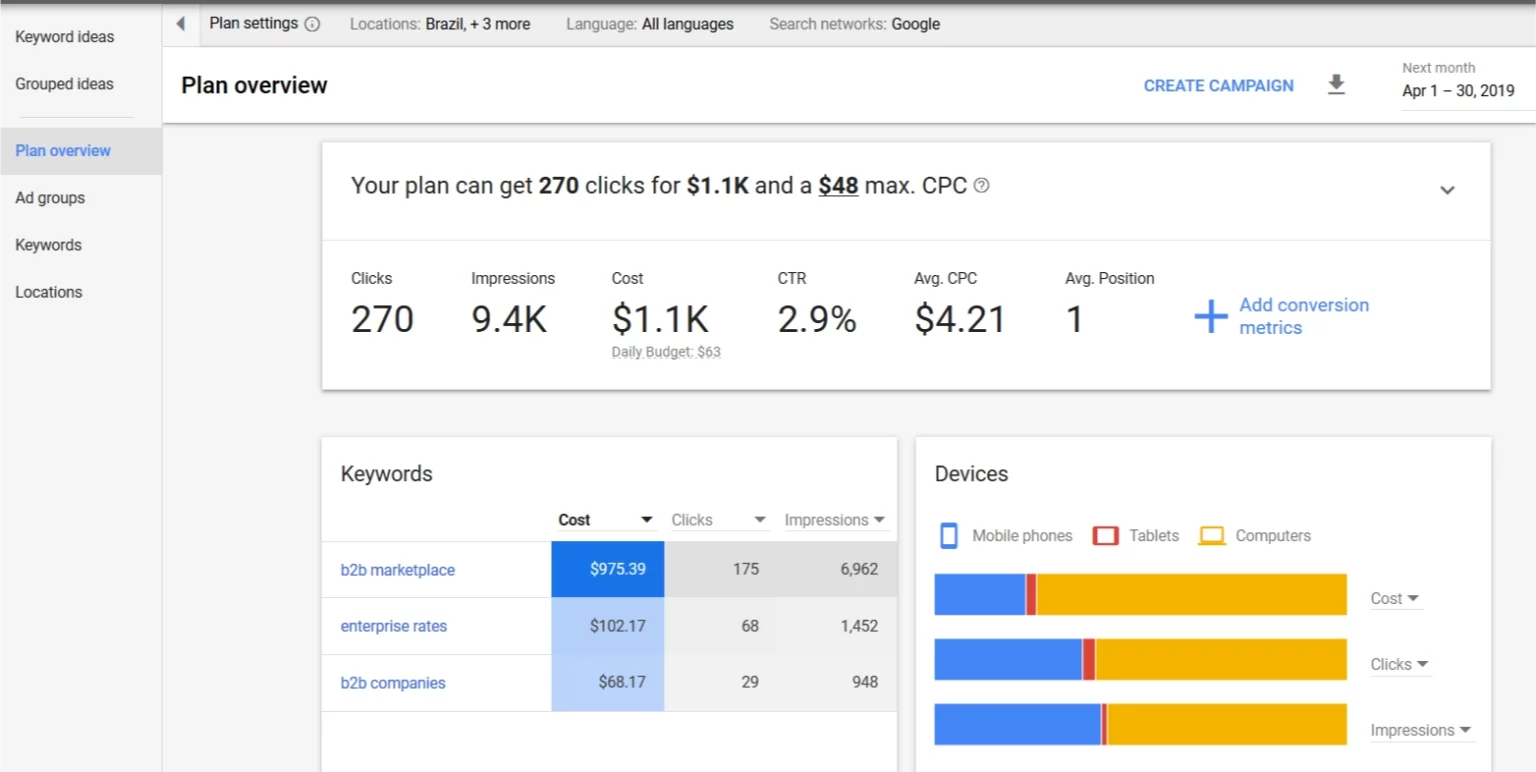
6) Find Your Reach in a Particular Location
The KWP can also be used to find location data that will tell you about the reach in a specific region, state, union territory, Nielsen DMA region, county, municipality, city or your targeted locations. The information can then be used to determine where competition will be high or low based on different factors.
Location data can be used to decide:
- Locations that you need to prioritize marketing resources, including local and international places
- Exact locations (at a granular level, g. city) where you should expand and focus your attention to target, nurture, and convert prospects to drive more sales
7) Explore Seasonal Trends
KWP data can be used to understand how interest fluctuates and evolves from month-to-month. There are different ways that you can use this data. For example,
- You can produce high-quality blogs in the period just before (and during) the peak season when a product or service peaks in interest, to inform your marketing team about what your target audience want/desire to purchase
- You can prioritize what to focus on in different seasons of the year depending on what is hot on your product catalogue and what is not.
- You can allocate resources for marketing purposes when they are most likely to yield the most ROI
- You can offer aggressive discounts and product promotions during low traffic months
8) Product Viability Research
Instead of merely looking at short-term trends (month-to-month), you could also opt to look for long-term trends spanning a few years (usually four years). Such data can help you understand when certain products go in and out of fashion and whether you can ride an upsurge of interest or whether you are too late to profit from a trend.
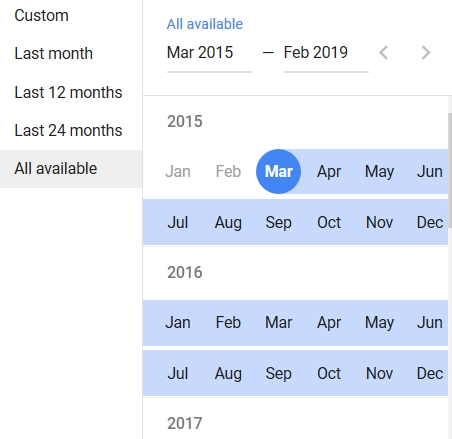
9) Enhance Your SEO Content Decisions
Implementing a comprehensive SEO marketing strategy can be extremely time-consuming. That said, KWP can enhance the search engine visibility for your website by providing useful data about what to include in blog posts, landing pages, and product descriptions. This can be done by first researching keywords you want your site to rank for in Google Search results and then fine-tuning the results using Your search term, idea, Avg. Monthly searches, competition, Competition (indexed value), etc.
Such data can be useful for:
- Saving on AdWords spend by focusing on a long-term organic SEO approach
- Finding what products have a high search volume or level of interest during specific times of the year
- Finding out the level of competition for particular keywords based on ‘high’, ‘medium’, ‘low’ and bid value, and competition indexed value.
10) Understand and Build Your Brand
Keyword research is not just useful for SEO but also for other digital marketing practices like social media marketing, data-driven personalization, email marketing, content marketing, etc. Keywords also explain where your organic traffic comes from which in turn helps you to understand what your company is recognized for (your brand).
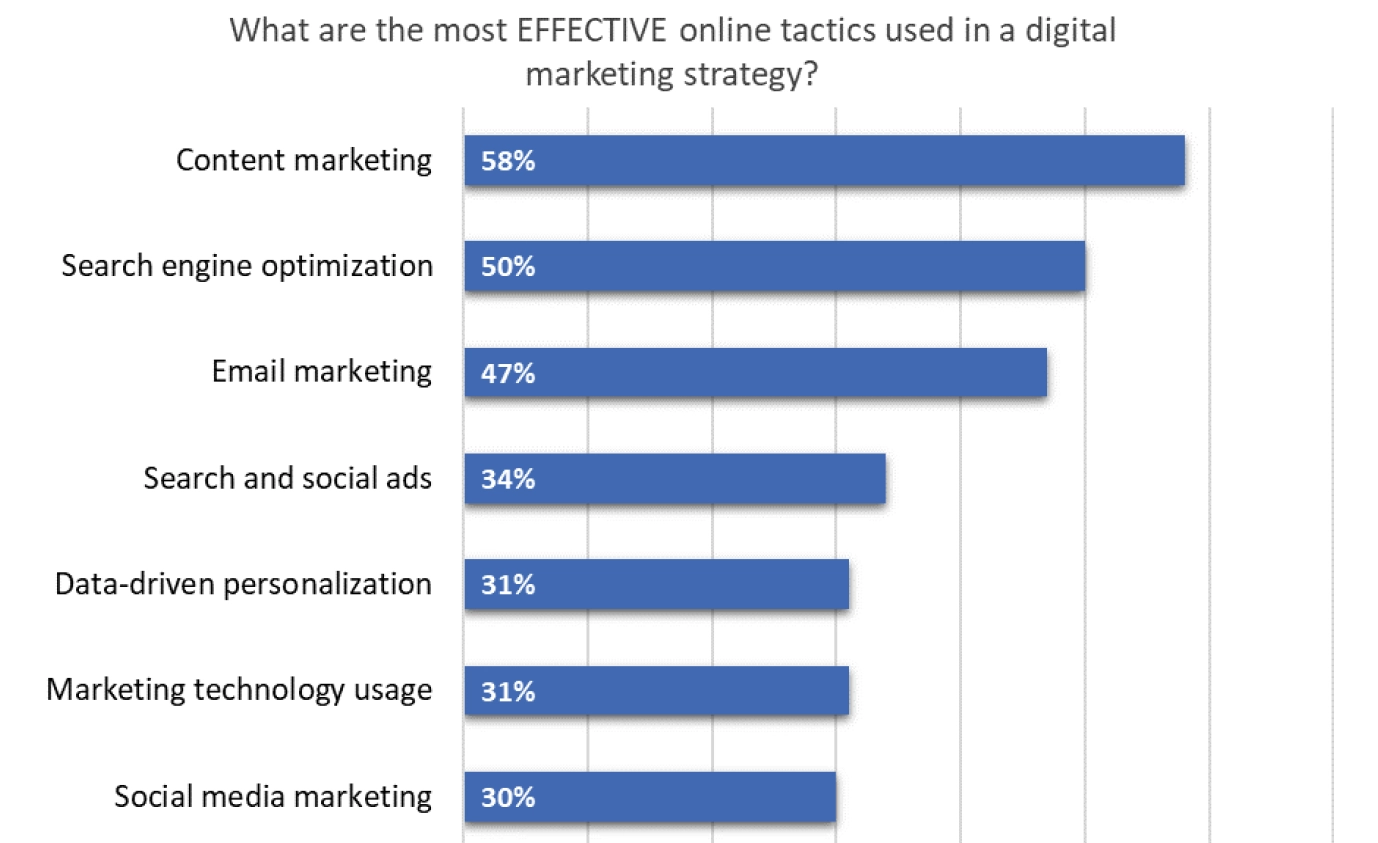
Figure 2: Online tactics used in digital marketing
By using the right keywords in content marketing, your marketing team can, therefore, shape your brand. Additionally, by shaping a consistent brand image, all other marketing and sales activities become more efficient down the line. KWP can, therefore, be a useful tool that marketers use for building or shaping your brand.
Conclusion
It’s not difficult to see why KWP is a favorite tool for content marketing and SEO experts like Mike. It is a powerful tool that you can use to incorporate into your keyword research workflow because it is packed with valuable insights that you can’t get from other keyword research tools. Although it lacks some useful features, it can be used as the foundational tool for keyword research, and utilized with other keyword research tools, such as Ahrefs Keyword Explorer, to get comprehensive data that you can use to enhance visibility for your website.
Our blog
Latest blog posts
Tool and strategies modern teams need to help their companies grow.

B2B companies must generate leads that are ready to buy their products in order to me...

In the absence of a constant flow of leads, sales teams can't meet their targets and ...

Podcasts and webinars are powerful tools that marketers can use to reach new audience...
